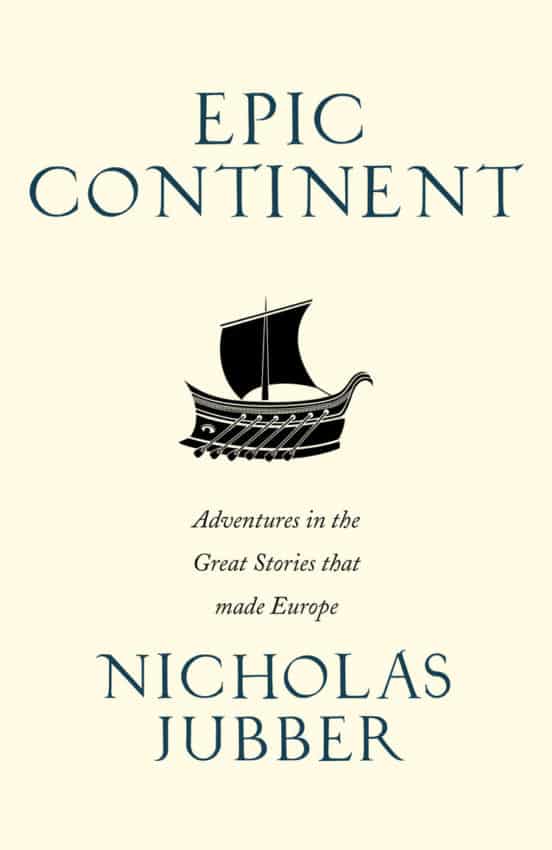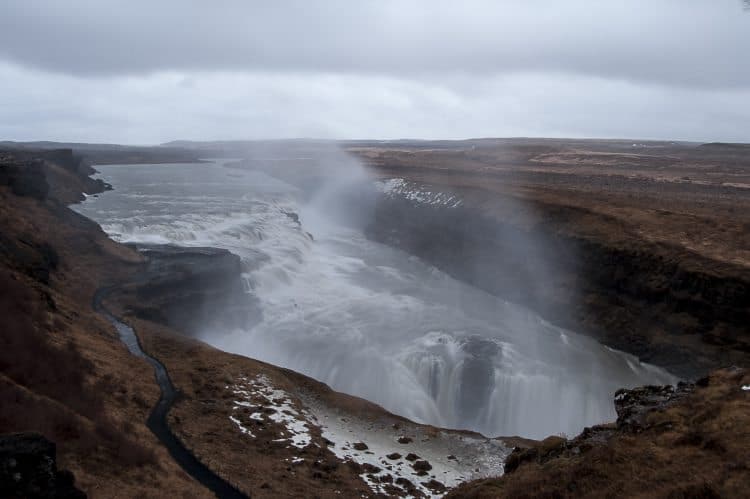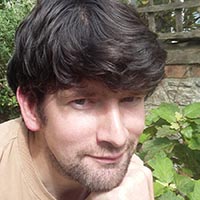
Selected by National Geographic as one of 12 Great Books for travelers, these are the stories that made Europe
Journeying from Turkey to Iceland, award-winning travel writer Nicholas Jubber takes us on a fascinating adventure through our continent’s most enduring epic poems to learn how they were shaped by their times, and how they have since shaped us.

The great European epics were all inspired by moments of seismic change: The Odyssey tells of the aftermath of the Trojan War, the primal conflict from which much of European civilization was spawned. The Song of the Nibelungen tracks the collapse of a Germanic kingdom on the edge of the Roman Empire.
Both the French Song of Roland and the Serbian Kosovo Cycle emerged from devastating conflicts between Christian and Muslim powers. Beowulf, the only surviving Old English epic, and the great Icelandic Saga of Burnt Njal respond to times of great religious struggle — the shift from paganism to Christianity. These stories have stirred passions ever since they were composed, motivating armies and revolutionaries, and they continue to do so today.
Reaching back into the ancient and medieval eras in which these defining works were produced, and investigating their continuing influence today, Epic Continent: Adventures in the Great Stories of Europe explores how matters of honor, fundamentalism, fate, nationhood, sex, class and politics have preoccupied the people of Europe across the millennia.
In these tales soaked in blood and fire, Nicholas Jubber discovers how the world of gods and emperors, dragons and water-maidens, knights and princesses made our own: their deep impact on European identity, and their resonance in our turbulent times.

Excerpt from the book: The Trail of Saga of Burnt Njal in Iceland
Lava plains stretched towards the cinder cones of Mount Hekla, Iceland, under the hoop of a rainbow, an arch so bright I wanted to throw a stone and see if it bounced. Rain bubbled in the peat holes, calming to oily browns, tinged with the same colors as the rainbow The Ranga river – ‘the Crooked’ – gurgled under the hoop, and I followed its northern bank to a gnarly, moss-patched clump: ‘Gunnar’s Rock’, where one of the saga’s most ferocious battles takes place.

Climbing over muddy runnels and rocky spikes, I felt like I was mounting some dormant beast, a cross between a sarsen and an armadillo.
I wiped the spray off my glasses and peered from the top, imagining Gunnar’s perspective – the ambushers sweeping out from the Hill of Knaves, their spears flashing against the tips of Gunnar’s arrows; arms and legs sliced into the mud, bodies hurled into the raging current.
The rain was splashing my shoulders, dribbling down my trousers; the wind kept bashing against my ribs, chopping me down. True, I didn’t have any warriors to fight off, but I was still getting my share of ‘battle sleet’, to borrow a phrase of Gunnar’s.
If ambushers are analogous with terrible weather, surely the image works the other way round?
But the racketing elements couldn’t obscure the richness of the countryside. Shuffling southwards, bogland sparkled alongside downs so lushly green they looked as if they had been hosed down with malachite paint. Approaching the cliffs of Thrihyrning (the ‘Three Peak Mountain’), I waded between bushes of deep yellows and burning red. There were huts dug into the hillsides – storage containers roofed in turf – poking out of the grass like hobbit houses. Verandahs spun around wooden chalets on stilts, raised over the lava fields like observation posts.
Ahead, wrinkled slopes of tuff stone slid from the distinctive pinnacles of Three Peak Mountain – like giant troll ears billowing either side of a knobbly crown. The rain-swept perspective was distorting, stretching ever further until at last, the dirt track turned alongside the foothills. Only now, I could feel my heart sinking.
Close to the mountain base was the gleam of a river: dashing over the bed, pleating across the boulders in the middle, as clear and bright as whiskey. The wind was bawling too hard to hear the river’s hiss, but as I drew closer, I realized it wasn’t running out. The river had ambushed me. In order to trek further south, I would have to ford it.

I climbed up lava knolls, mud softening underfoot, taking the high way in search of a dry way. But there was no other option. No way was I turning back now: it had taken hours to get this far. Besides, how much wetter could I get?
Off came my shoes, socks and trousers, stuffed inside my backpack, and in went me.
Those first steps in the stream, it felt like I was wrapping my ankles in ice cubes. Treading over a pebbly islet, I dropped into a deeper stream, about five meters across, which lapped my thighs with its icy touch. The current tugged at my balance and it took a few mincing steps to adjust to its rhythm.
Wading the Rivers
On the last stretch, I went too fast up the bank and had to drop back into the river before I could mount it.
Wading through Icelandic rivers in my underwear – this wasn’t an activity I’d been planning before the trip and not one I had any wish to repeat. My feet had turned ivory-white, the soles wrinkled, blisters bubbling around my toes. I rubbed them down with my towel, coddling them in my thickest socks, stifling the pain where my blisters had leaked.
A road trickled over the hillside ahead. If I was reading the map correctly, this should carry me around the shoulder of the mountain, towards Gunnar’s home-place of Hliðarendi. I crossed my fingers there wouldn’t be any more rivers to ford. I’d walked nearly twenty miles today – but there were still several more to go.
Save Money by Camping in Iceland
The track turned to gravel and carried me over a couple of streams (now channeled, thankfully, through pipes) towards the waterfall of Knittafoss. Beryl-green hills flooded the cascade, which plunged down crevasses of steamy froth and icy seracs like mammoth tusks. This valley is known as Flosidalur, or ‘Flosi’s dale’, after the arsonist who leads the burning of Njal’s farmhouse. According to the saga, this is where they gather after murdering the lawyer and his family.
Over the last hour, my body was beginning to give way, my right knee twinging, my legs starting to buckle, my fingers throbbing from the cold. The road curled through pine and fir, down to the main road, where farmsteads gleamed with metal and glass and other artificial materials – exotic sights after so many miles of raw nature.
I hadn’t eaten anything since morning, and now I was so hungry, I drooled at the sight of a crowberry bush. Standing on the stoop of a roadside guest-house, a kindly lady held back a curious toddler and pointed me towards a pine cabin across the road, which functioned as a kitchen for her guests.
As I stepped inside, my breath poured out like steam from a hotpot. The cabin was occupied by three couples. They were watching movies on their iPads, faces lit by the screens’ clamshell glow, and none of them looked up.
Thank God – I was too weary to talk. Slowly, relishing the calm ambiance of the place, I boiled up a mug of soup, savoring the heat on my lips even more than the taste of the broth.
The last dabs of light had been sucked out of the sky, so I followed the path towards Gunnar’s old home with the flashlight application on my phone. Climbing uphill through the spattering rain, I saw asylum – a tiny shed, a hoop of corrugated iron, cluttered with planks of rotten wood and blocks of stone.
Crawling inside, I tucked myself into a ball, hugging my damp knees. I was really spent, and it was only later that I mustered the energy to unroll my sleeping bag. This was the place Gunnar loved so much that he gambled his life on the chance to stay there. In the morning, it would show me its beauty.
About the Author

Nicholas Jubber moved to Jerusalem after graduating from Oxford University. He’d been working two weeks when the intifada broke out and he started traveling the Middle East and East Africa. He has written three previous books, The Timbuktu School for Nomads, The Prester Quest (winner of the Dolman Prize) and Drinking Arak Off an Ayatollah’s Beard (shortlisted for the Dolman Prize). He has written for the Guardian, the? Observer, and the Globe and Mail.
Buy the bo0k on Amazon: Epic Continent: Adventures in the Great Stories of Europe.
For more information visit www.nickjubber.com. Connect with Nick on twitter @jubberstravels, Instagram
- Missouri Sports Travel Adventure: From Landmarks to Ballparks - January 21, 2026
- What First-Time Visitors Get Wrong About Visiting Iceland - January 15, 2026
- Bareboat Charter vs all-inclusive Crewed: Which Luxury Charter Fits You? - December 29, 2025

